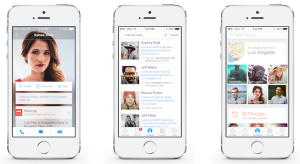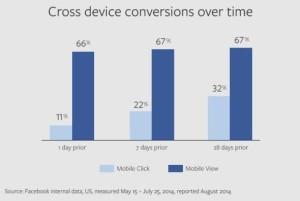 Can you hear that? It’s the blessed sound of silence as the kids are finally back in school and parents everywhere heave a massive sigh of relief. Summer is awesome. By the end of July, everybody is ready for school to start, so we collectively hang on by our fingernails until that magical day arrives. I’ve never been happier. Okay, let’s get down to business – here’s what happened this week that we think you should know about.
Can you hear that? It’s the blessed sound of silence as the kids are finally back in school and parents everywhere heave a massive sigh of relief. Summer is awesome. By the end of July, everybody is ready for school to start, so we collectively hang on by our fingernails until that magical day arrives. I’ve never been happier. Okay, let’s get down to business – here’s what happened this week that we think you should know about.
Industry
Twitter and Pinterest Have Fun With Video
With video becoming central to successful online marketing, both Twitter and Pinterest announced video-themed enhancements this past week.
Twitter rolled out Promoted Video Tweets. This is essentially a paid version of the Twitter Video Card. With Promoted Video Tweets, users can watch videos from inside their Twitter feed with just a single click. Early results have indicated people are more likely to click which has led to more video views. Who can resist clicking when it’s right there in front of them?
Twitter says they’re opening up their new promoted video tweet feature to more and more people with the overall goal of bringing “more video into our users’ timelines to create a richer and more engaging Twitter.” I don’t know how I feel about this. I think that Twitter is becoming a place where fewer people are hanging out and where more likely people (and brands) are blasting their content. I also think that so many users use Twitter from a dashboard that this functionality will be a non-issue for them. What do you think?
Pinterest announced a new video iniative of its own, in partnership with Vevo. Essentially, they’ve added a Vevo-branded player so that users can find, watch and share videos right within Pinterest without having to click away. Vevo has made it easier to “pin” your favorite videos by adding share tools on their site. I think this is pretty smart. Pinterest already has a lot of eyeballs and by adding reasons for users to stick around, well, the site just becomes exponentially more valuable. Here’s an example.
Technology
Square Launches Appointments Service For Businesses

via Square
This past week, Square announced that its branching out beyond online payments and launching an appointment-scheduling service called Square Appointments. While it’s positioned to target service-based companies (who are probably large users of Square), anyone can sign up. You can check out the service for a 30-day free trial to see if it maybe right for you. Paid plans start at $30 a month for individuals up to $90 a month for businesses including unlimited access for staff members.
Square is best known for offering online payment processing services, the company also added “Invoices” offering users an easy to use platform to quickly create and process invoices at no extra charge.
I think this is big news. So many times businesses rely on one route to monetization and there’s an inherent danger there. With this new functionality, Square becomes something even more valuable and/or more attractive to both existing customers and to prospective customers. We did some work for a client in the online appointment setting business last summer and I had no idea what a profitable business this is. I also realized how much businesses can save by offering their customers online appointment setting – both in time and resources – and this, to me, anyway, is a really smart move.
Amazon Unveils a Credit Card Reader Taking a Swipe at Square
Amazon entered the competition for the small business cash register this week with the introduction of a new credit card reading device called Amazon Local Register, which takes aim directly at Square. It’s one of many products the online retailer has developed and is developing tailored specifically for the small business owner.

Amazon is competing on price and coming out of the gate strong, with an attractive 1.75 percent rate on each card swipe, significantly below the 2.75 percent Square charges (why didn’t they do this with their new phone??). It’s important to note that the 1.75 percent rate Amazon is touting is a special promotional rate scheduled to run through January 2016, when the rate will increase to 2.25 percent (which still beats Square. This processing price point is surely a loss leader. But for a small business, a year and a half at full point less than Square might convince folks to switch and/or to try it if they’ve not yet made the move to online processing. Of course, they’ll still have to buy the device, so if they already have a Square or PayPal device, making a change is something that’s often not easy for customers to do.
This could spell trouble for Square, which the Wall Street Journal recently reported is running low on cash. Square’s losses totaled $100 million last year and the startup has spent almost half of its $340 million in venture capital. Which, of course, could be part of the motivation behind the online appointment setting rollout. Amazon is tough to compete against. It has deep pockets and has demonstrated it loves to compete in low margin businesses. The next year in this space will be interesting to watch.
Humin Adds Context to Your Contacts For a Smarter Smartphone

via Engadget
Launching just this week on the iOS App Store, Humin plans to not only replace your contacts app but your phone app as well by adding context to your contacts. Instead of accessing your contact by name only, Humin lets you look up by your relationship to them or location you first met.
For example, if you want to find that person you met at a conference just last week, but for the life of you can’t remember their name, you simply type “met last week” in the Humin search filed and up pops everyone you met last week. You can even get more granular by searching something like “met at party last week” to narrow your search.
“The problem we needed to solve wasn’t the contacts problem,” says Ankur Jain, Humin’s co-founder and CEO. “It was the search problem.”
To get started, when you first launch the app you’ll be asked to connect your contacts and calendar with Humin. While you can stop there, to really get the most out of Humin, you’re encouraged to connect your Facebook and email accounts as well as your LinkedIn profile. This is how Humin gathers data and learns more about the people you interact with and frequently contact you.
You can even have Humin replace your phone app entirely and can have it keep track of all your missed calls and voicemails. According to Jain they’ve worked directly with all the major U.S. carriers to develop this technology.
“We keep all of that data on your phone locally … your email never goes to our servers” according to Jain. The app won’t contact anyone unless you allow it. To make sure you have the most updated contact information, you can send a verification request to your contacts via the app. This is when the app really becomes useful and best able to surface information when you need it most.
If you want to check out Humin for yourself, iPhone users can get it right now from the App Store. It’s currently U.S.-only but should be available in the UK soon. An Android version will be coming soon.
Yo Goes Beyond ‘Yo’ and Adds Hashtags and Links
Yo, the mobile app that exploded on the scene recently that allows people to say “yo” to each other, has introduced some new features.
As of this week, Yo now lets users create profiles and display their name and a photo in addition to their usernames. They can also attach a link to messages and subscribe to other websites to get notified about updates through a feature called Index. The app also supports hashtags that can be shared publicly.
With the latest enhancements, it looks like Yo wants to evolve into a notifications service in addition to just sending a “Yo” to your friends. There had to be something because the novelty of sending a “Yo” wears off really quickly – says the person who’s downloaded and tried it. Have you used Yo and, if so, what do you think about this?
Social Media
Facebook Launches Cross-Device Tracking For Facebook Ads

via Marketing Pilgrim
In today’s always-connected online world, people frequently are using multiple mobile devices and computers to access Facebook and Facebook ads. Guess what. Facebook says, they can link all that activity together.
According to Facebook: “With the new cross-device report, advertisers are now able to view the devices on which people see ads and the devices on which conversions subsequently occur. For instance, a marketer can view the number of customers that clicked an ad on an iPhone but then later converted on desktop, or the number of people that saw an ad on desktop but then converted on an Android tablet. The fact that they can do this doesn’t surprise me, the fact that they’ve taken so long to do it does. It’s about time.
In general, the ability to track sales across multiple devices is critical and marketers need to be learning all they can about integrating cross-device functionality into everything they do, as well as understanding the importance of tracking cross-device analytics and tying them all together. According to a survey by GfK, more than 40% of online adults start an activity on one device and finish on another. That increases with the number of devices a person owns..
To take advantage of the new cross device tracking, advertisers have to place a Conversion Pixel on the page they want to monitor. You can see the results on the Facebook Ad Reports Page by selecting “Cross-Device.”
Twitter Looking To Double Down on Direct Messages
Twitter CEO Dick Costolo, speaking on a recent earnings call, is preparing to introduce enhancements to its Direct Message service. According to Costolo, “Specifically, being able to take a public conversation and being able to migrate it to a private channel. So, taking a public tweet, and being able to have a conversation about that public tweet with a private group of people is a compelling use case. One we see internally as something a lot of us would like to do and one that will be a real engagement driver for us.” Costolo added, “I’m talking about taking a public conversation and migrating it to a private channel so that you and I can have a private channel about what the public conversation is.”
While it appears Twitter is looking at ways to play catch up to Facebook, Costolo assured the media that “at present the best place for us to innovate is within the Twitter application because there’s so much value in migrating the public conversation to the private channel.” I see value here, but I can’t help but wonder if it’s too little too late. We shall see.
Twitter Reveals How Many Active Users Are Bots, The Number May Be Higher Than You Think

via Search Engine Journal
Twitter recently reported that as much as 8.5 percent of monthly active users are bots. A bot is basically an automated data-collecting application that involves no human interaction. That shouldn’t surprise anyone, because a large part of what the Twitter platform does is allow applications to collect data.
In addition to the data-collecting apps, there are plenty of bot accounts acting as if they are real people – if you’re a Twitter user, surely you’ve run across them before. This is a problem for Twitter only because brands and businesses rely on the accuracy of their audience numbers to estimate their “reach” (ephemeral on the best of days) on Twitter. Since the cost of placing ads on Twitter is based on the size of the audience, it’s understandable that advertisers don’t want to pay to reach bots.
While the large number of bots on Twitter is a big issue for advertisers, real people who follow an account only to leave Twitter a short time later is also contributing to inaccurate audience numbers. Inaccurate audience numbers means jittery advertisers, so this kind of news is never the kind of coverage Twitter is looking for.
Miscellaneous
Make your own ‘Guardians of the Galaxy’ dancing Baby Groot
I took the kids to see Guardians of the Galaxy recently and I’m pretty sure I liked it even more than they did. But I’m a huge Chris Pratt fan, so that wasn’t really a surprise. If you’re a fan (or have kids who are), you totally need to check out this homemade version of dancing baby Groot.
A heartbroken 4 year old learns all about the delete button
The moral of the story, back up your photos!
That’s all for me for the week. Have a great weekend!
photo credit: clasesdeperiodismo via photopin cc
Things You Need To Know This Week – August 15, 2014 is a post from: V3 Kansas City Integrated Marketing and Social Media Agency

